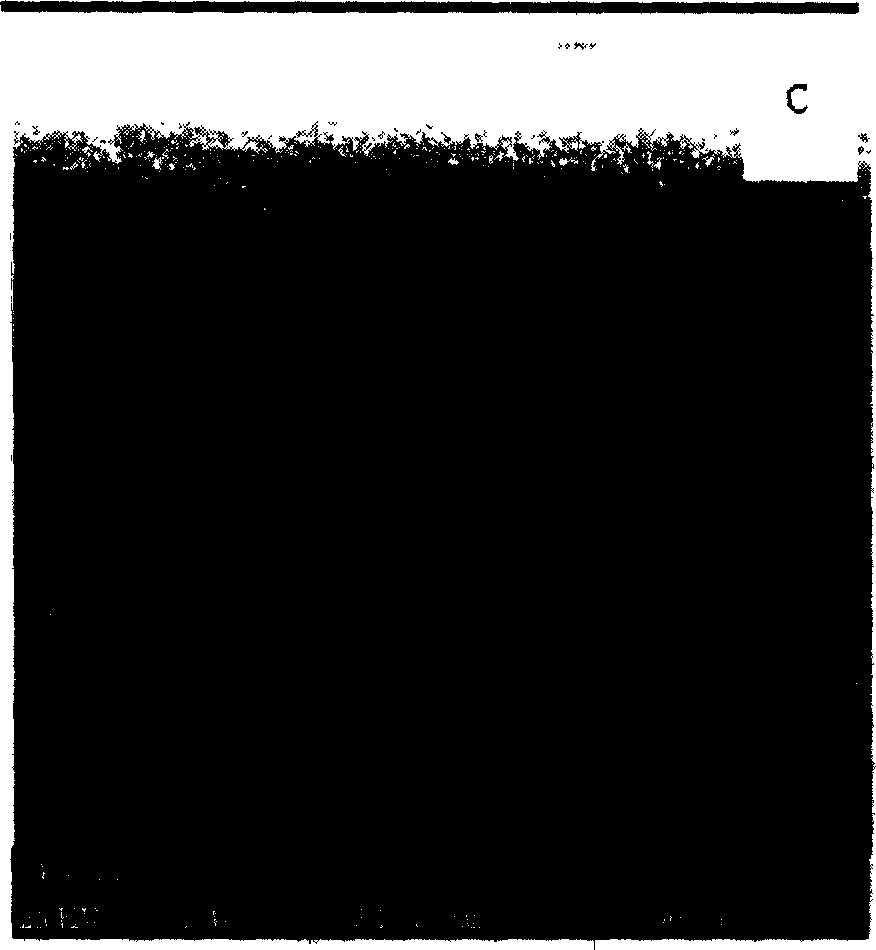Charged microporous filtration membrane and affinity base membrane preparing method
A technology of microporous membrane filtration and charging, which is applied in the field of microporous membranes, can solve problems such as limitations, and achieve the effects of simple reaction, improved filtration efficiency, good hydrophilicity and biocompatibility
- Summary
- Abstract
- Description
- Claims
- Application Information
AI Technical Summary
Problems solved by technology
Method used
Image
Examples
Embodiment 1
[0017] Use 7% by weight of cellulose diacetate, 43.8% of dimethylformamide, 22.7% of acetone, and 26.5% of glycerin to prepare a film-making solution, and apply the film solution on a glass plate with a thickness of 500 μm. Moisture absorption and precipitation in air with a humidity higher than 95% for 8 minutes. After the phase separation is basically completed, immerse in water to complete the solvent exchange and remove unnecessary components, solidify the membrane structure, and prepare a flat microfiltration membrane.
Embodiment 2
[0019] Add 50% PEI aqueous solution, polyethylene glycol (molecular weight 1000), and ethylenediamine to the dimethylformamide / acetone solution of cellulose diacetate to prepare a polymer solution, and polyisocyanate (diphenylmethyl diisocyanate) Polymer) 7% solution (DMF and acetone are half and half as solvent), added according to the weight ratio of polyisocyanate, polyethylene glycol, and ethylenediamine as 10:4:1, and added glycerin after polymerization and crosslinking to prepare Membrane fluid, its final weight percentage is cellulose diacetate 6.9%, dimethylformamide 43.2%, acetone 22.5%, 50% PEI aqueous solution 1%, has added 0.12% polyethylene glycol (molecular weight 1000), 0.03% ethyl alcohol Diamine, 0.34% polyisocyanate, 23.8% glycerin, scrape the film solution on a glass plate with a thickness of 500 μm, and deposit it in air at 50°C with a relative humidity higher than 95% for 2 minutes. All the other conditions are with embodiment 1.
Embodiment 3
[0021] Add 50% PEI aqueous solution to the dimethylformamide / acetone solution of cellulose diacetate to prepare a blended polymer solution. The final weight percentage is 7% of cellulose diacetate, 45.7% of dimethylformamide, and 23.7% of acetone %, 50% PEI aqueous solution 0.5%, glycerin 23.1%, scrape the film solution on a glass plate with a thickness of 400 μm, and deposit it in air at 50°C with a relative humidity higher than 95% for 2 minutes. All the other conditions are with embodiment 1.
PUM
 Login to View More
Login to View More Abstract
Description
Claims
Application Information
 Login to View More
Login to View More - R&D
- Intellectual Property
- Life Sciences
- Materials
- Tech Scout
- Unparalleled Data Quality
- Higher Quality Content
- 60% Fewer Hallucinations
Browse by: Latest US Patents, China's latest patents, Technical Efficacy Thesaurus, Application Domain, Technology Topic, Popular Technical Reports.
© 2025 PatSnap. All rights reserved.Legal|Privacy policy|Modern Slavery Act Transparency Statement|Sitemap|About US| Contact US: help@patsnap.com



